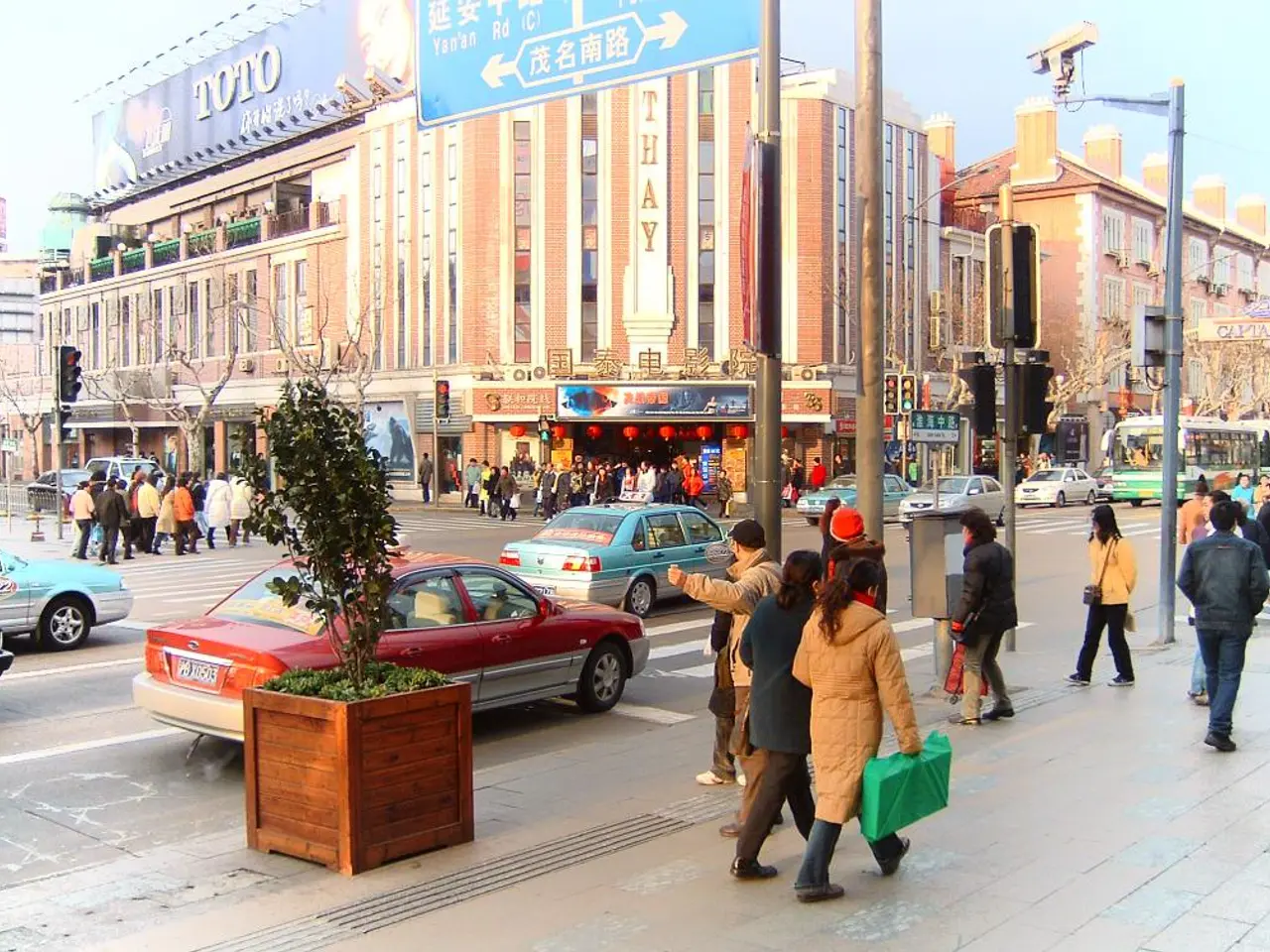Accelerated Pace and Reduced Hangouts on Sidewalks Observed by Scientists Among Pedestrians
In a recent study published in the Proceedings of the National Academy of Sciences, researchers from MIT, Yale University, the University of Hong Kong, Michigan State University, Harvard University, and the Senseable City Lab have explored the dynamics of urban spaces over the past four decades. The study, titled "Exploring the social life of urban spaces through AI," used computer vision and AI models to analyze and quantify the activity in videos filmed by urbanist William Whyte in Boston, New York, and Philadelphia during the late 1970s and early 1980s.
The study found that the average walking speed of pedestrians in three northeastern U.S. cities increased by 15 percent from 1980 to 2010. This increase can be attributed to several interrelated factors, including urban density and commuting patterns, lifestyle changes and time pressure, demographic shifts, infrastructure improvements, and environmental and social factors.
As urban areas in the Northeast have become denser, people may walk more frequently as part of their daily commuting routines. Modern life tends to involve tighter schedules and greater time pressures, causing pedestrians to walk faster to keep up with these demands. Younger populations and professionals, who often walk briskly as part of their urban lifestyle, might also be contributing to quicker pedestrian speeds.
Improvements in sidewalks, crosswalks, and street design aimed at pedestrian safety and mobility can facilitate faster walking speeds. Better lighting, smoother pavements, and fewer obstacles reduce walking friction. Changes in neighborhood safety, weather conditions, or pollution levels could also influence how quickly people walk outdoors. For example, in less safe areas, people might walk faster to minimize exposure.
Regarding the changes in the use of public spaces over the same period, the study reveals a shift toward multifunctional use. Public spaces have evolved from primarily transit and passage areas to multifunctional spaces supporting social interaction, recreation, and events. Many cities have implemented pedestrian-only zones, plazas, and parklets, encouraging more leisurely uses and community gathering rather than just movement through space.
Public spaces now often host markets, performances, and festivals, making them destinations rather than just thoroughfares. The incorporation of Wi-Fi and digital information points has changed how people use and linger in public spaces. Trends toward sustainable urbanism have led to more green spaces and pedestrian-friendly designs encouraging walking, cycling, and outdoor activity.
However, the study also shows a decline in group interactions in public spaces. The percentage of individuals who became part of a group in public spaces declined from 5.5% in 1980 to 2% in 2010. Ratti suggests that this could be due to the proliferation of coffee shops and other indoor venues, causing people to move their social interactions into more comfortable, private spaces. Alternatively, Ratti notes that the decrease in group interactions could be due to a more transactional nature of public space today, with behavior being more predicated on texting first to meet in public space.
The number of people lingering in public spaces declined by 14 percent in that time. In the latter decades of his career, William Whyte, the subject of the study, focused on urbanism. The footage he filmed was archived by the Project for Public Spaces.
The researchers are currently collecting footage from 40 squares in Europe to learn at a larger scale. Ratti, Duarte, and other researchers from MIT's Senseable City Lab are conducting an extensive survey of European public spaces to shed more light on the interaction between people and public forums. The results could help inform urban planning, as designers seek to create new public areas or modify existing ones.
In conclusion, while average walking speeds have increased likely due to practical time-use pressures and urban living patterns, public spaces have simultaneously become more vibrant and multifunctional, balancing the need for efficient movement with social, cultural, and recreational uses.
- The study's findings suggest that improvements in public spaces, such as pedestrian-only zones, parklets, and plazas, have led to their evolution from simple transit areas into spaces for social interaction, recreation, and events.
- The research also highlights a decline in group interactions in public spaces, with the percentage of individuals who became part of a group in public spaces falling from 5.5% in 1980 to 2% in 2010.
- The researchers from MIT's Senseable City Lab are currently collecting footage from 40 squares in Europe to expand their understanding of the interaction between people and public forums, with the aim of informing urban planning.
- The study demonstrates that technology, particularly digital information points and Wi-Fi, has transformed how people use and linger in public spaces, and trends toward sustainable urbanism have led to more green spaces and pedestrian-friendly designs.




